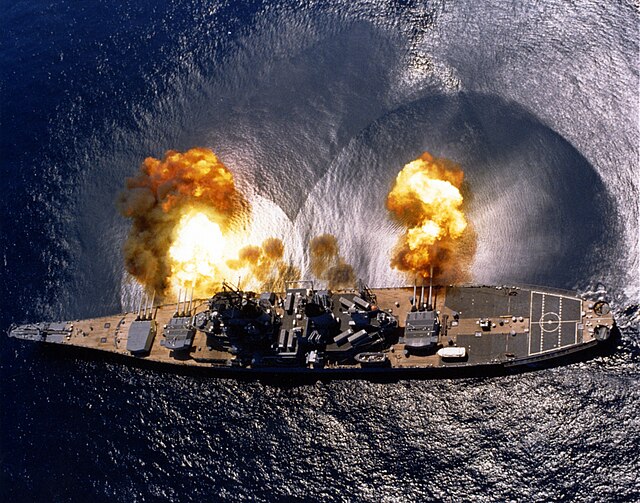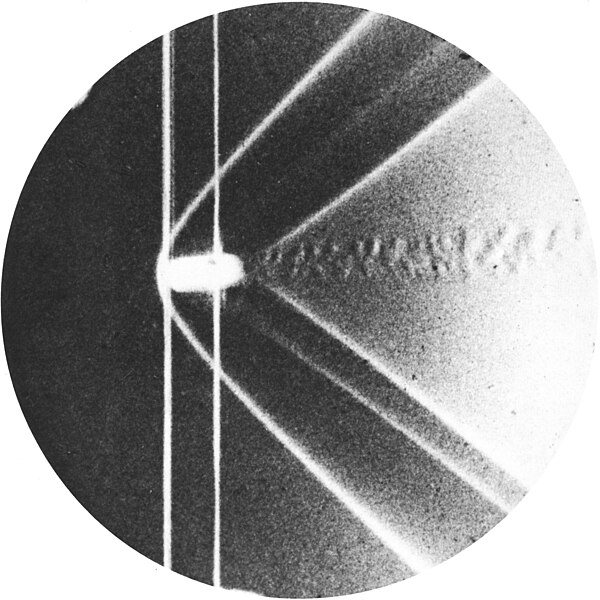In physics, a shock wave, or shock, is a type of propagating disturbance that moves faster than the local speed of sound in the medium. Like an ordinary wave, a shock wave carries energy and can propagate through a medium but is characterized by an abrupt, nearly discontinuous, change in pressure, temperature, and density of the medium.
Schlieren photograph of an attached shock on a sharp-nosed supersonic body
USS Iowa firing at broadside during training exercises in Puerto Rico, 1984. Circular marks are visible where the expanding spherical atmospheric shockwaves from the gun firing meet the water surface.
Shock wave propagating into a stationary medium, ahead of the fireball of an explosion. The shock is made visible by the shadow effect (Trinity explosion).
Schlieren photograph of the detached shock on a bullet in supersonic flight, published by Ernst Mach and Peter Salcher in 1887
Supersonic speed is the speed of an object that exceeds the speed of sound (Mach 1). For objects traveling in dry air of a temperature of 20 °C (68 °F) at sea level, this speed is approximately 343.2 m/s. Speeds greater than five times the speed of sound (Mach 5) are often referred to as hypersonic. Flights during which only some parts of the air surrounding an object, such as the ends of rotor blades, reach supersonic speeds are called transonic. This occurs typically somewhere between Mach 0.8 and Mach 1.2.
A United States Navy F/A-18F Super Hornet in transonic flight
U.S. Navy F/A-18 approaching the sound barrier. The white cloud forms as a result of the supersonic expansion fans dropping the air temperature below the dew point.
British Airways Concorde in early BA livery at London-Heathrow Airport, in the early 1980s







